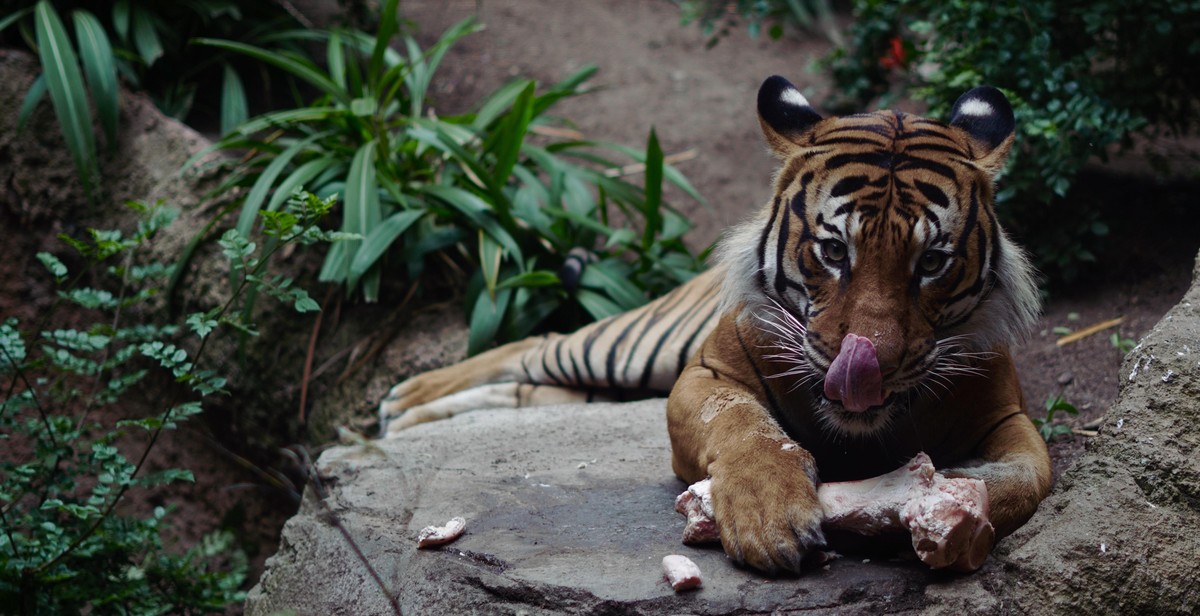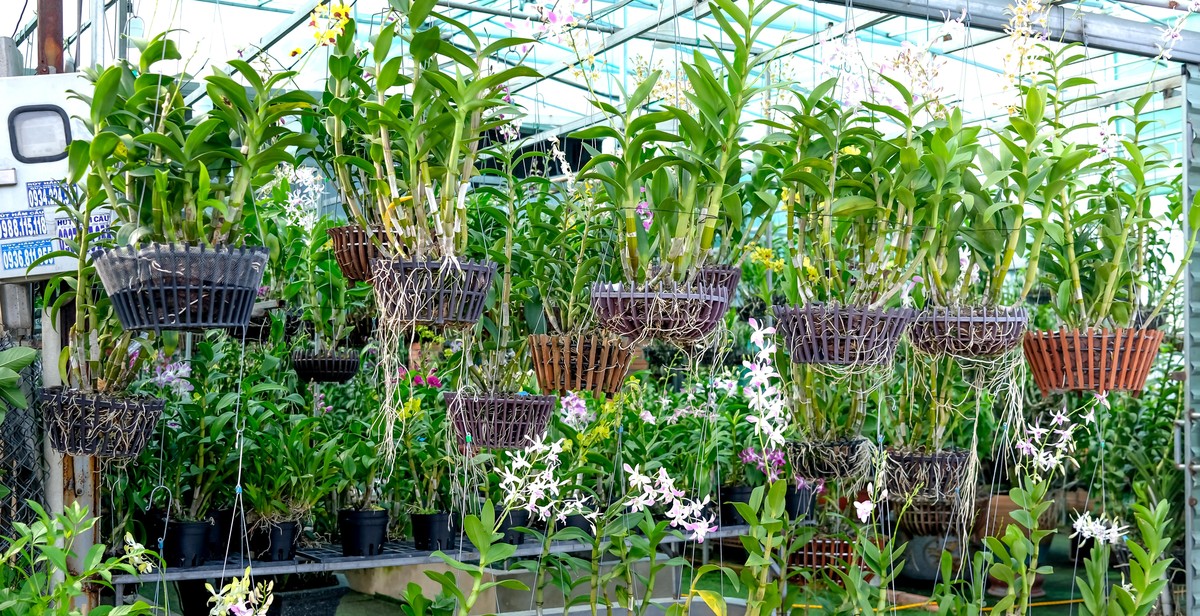Introduction
Welcome to the fascinating world of captivating plant species! From lush rainforests to arid deserts, our planet is home to an incredible variety of plants that never cease to amaze us. This article will take you on a journey to discover some of the most enchanting plant species and provide insights on where to find them.
Plants have long been a source of wonder and inspiration for humans. Whether it’s the vibrant colors of flowers, the intricate patterns of leaves, or the unique adaptations of desert plants, there is something captivating about the natural beauty of plants. Exploring different ecosystems allows us to witness the astonishing diversity that exists within the plant kingdom.
In this article, we will delve into the world of carnivorous plants that lure unsuspecting insects, orchids that mimic insects to attract pollinators, and giant trees that have stood the test of time. We will also explore some of the world’s most famous botanical gardens and national parks, where you can encounter these awe-inspiring plant species up close.
Whether you are a nature enthusiast, a botany lover, or simply curious about the wonders of the natural world, this article will provide you with a glimpse into the captivating plant species that inhabit our planet. So, put on your hiking boots, grab your camera, and get ready to embark on an extraordinary journey through the mesmerizing world of plants.
1. The Beauty of Plant Species
Plant species are not only essential for the survival of our planet, but they also possess a captivating beauty that enchants and inspires us. From the vibrant colors of flowers to the intricate patterns on leaves, plants have an aesthetic appeal that can be found in every corner of the globe. In this section, we will explore the importance, diversity, and benefits of plant species.
1.1 Importance of Plant Species
Plant species play a crucial role in maintaining the balance of our ecosystems. They are responsible for producing oxygen, filtering air pollutants, and providing habitats for countless animals. Without plants, our planet would be devoid of life as we know it. Additionally, plant species contribute to the stability of our climate by absorbing carbon dioxide and releasing oxygen through the process of photosynthesis.
Furthermore, plant species have immense economic importance. They serve as a valuable source of food, medicine, and raw materials for various industries. Many plant-derived substances are used in the production of pharmaceuticals, cosmetics, and textiles. The cultivation and trade of plant species also contribute significantly to local and global economies.
1.2 Diversity of Plant Species
The world is teeming with an astonishing variety of plant species. From towering trees in lush rainforests to delicate mosses in arid deserts, plants have adapted to thrive in diverse environments. It is estimated that there are over 390,000 known plant species, and countless more are yet to be discovered.
The diversity of plant species is not only visually captivating but also crucial for maintaining ecological balance. Different plant species provide unique ecological niches, supporting a wide range of organisms. They form complex food webs, offer shelter, and contribute to the intricate web of life on our planet.
1.3 Benefits of Plant Species
Plant species offer numerous benefits to humans and the environment. They improve air quality by absorbing harmful pollutants and releasing oxygen. Plants also help prevent soil erosion by stabilizing the ground with their roots. Additionally, they play a vital role in water conservation, as their roots help retain moisture in the soil.
Furthermore, spending time in natural environments with diverse plant species has been shown to have positive effects on human well-being. Research suggests that exposure to nature reduces stress, improves mood, and enhances cognitive function. The beauty and serenity of natural landscapes, adorned with various plant species, have a calming and rejuvenating effect on our senses.
In conclusion, plant species are not only essential for the survival of our planet but also possess a captivating beauty that enhances our lives. Their importance, diversity, and benefits make them an integral part of our ecosystem. Understanding and appreciating the beauty of plant species is crucial for their conservation and the well-being of future generations.

2. Where to Find Captivating Plant Species
Exploring the world of captivating plant species can be an exhilarating experience. From vibrant rainforests to meticulously curated botanical gardens, there are several places where you can immerse yourself in the beauty of nature. Here are some of the best locations to encounter these stunning plants:
2.1 Rainforests and Tropical Areas
Rainforests and tropical areas are treasure troves of captivating plant species. These lush and biodiverse regions are home to a wide variety of plants, including rare and exotic species. Some famous rainforests to visit include the Amazon rainforest in South America, the Congo Basin in Africa, and the Daintree Rainforest in Australia.
Exploring these areas allows you to witness the incredible diversity of plants, from towering trees to delicate orchids. It is advisable to join guided tours or hire local experts who can help you navigate through the dense vegetation and provide valuable insights about the plants you encounter.
2.2 Botanical Gardens
Botanical gardens are curated spaces dedicated to showcasing an array of captivating plant species. These gardens serve as living museums, offering visitors the opportunity to admire and learn about plants from different regions of the world. Some renowned botanical gardens include the Royal Botanic Gardens in Kew, England, the Singapore Botanic Gardens, and the New York Botanical Garden.
Within these gardens, you can explore themed sections that simulate different ecosystems, such as tropical rainforests, desert landscapes, or alpine meadows. Botanical gardens often have informative plaques and knowledgeable staff who can provide detailed information about the plants on display.
2.3 National Parks
National parks are not only natural wonders but also havens for captivating plant species. These protected areas preserve unique ecosystems and provide a glimpse into the natural beauty of a region. From the iconic sequoias in Yosemite National Park to the stunning wildflowers in Rocky Mountain National Park, there are countless plant species to discover.
While exploring national parks, be sure to follow designated trails and respect the rules and regulations in place to preserve the delicate balance of these ecosystems. Take the time to observe the plants up close, capturing their beauty through photography or simply enjoying the serenity they provide.
2.4 Local Nurseries
If you’re looking to bring captivating plant species into your own garden, local nurseries can be a great resource. These nurseries often stock a diverse range of plants, including rare and hard-to-find species. They can provide expert advice on plant care and help you select the perfect additions to your garden.
Visiting a local nursery allows you to see the plants in person and assess their health and quality. You can also inquire about specific plant species you are interested in and learn about their unique characteristics and requirements.
Whether you venture into rainforests, explore botanical gardens, hike through national parks, or visit local nurseries, each location offers a distinct experience to encounter captivating plant species. Embrace the opportunity to connect with nature and discover the wonders that the plant kingdom has to offer.

3. Popular Captivating Plant Species
3.1 Orchids
Orchids are one of the most popular and captivating plant species in the world. Known for their exotic beauty and delicate flowers, orchids have become a favorite among both amateur and experienced gardeners. These plants come in a wide range of colors, shapes, and sizes, making them a versatile choice for any garden or indoor space.
There are over 25,000 known species of orchids, each with its unique characteristics and requirements. Some popular orchid species include the Phalaenopsis, Cattleya, and Dendrobium. These plants are known for their vibrant colors and long-lasting blooms, making them a stunning addition to any floral arrangement or centerpiece.
3.2 Carnivorous Plants
Carnivorous plants are a fascinating and captivating group of plants that have evolved to attract, trap, and digest insects and other small animals. These unique plants have developed specialized adaptations to survive in nutrient-poor environments, making them a popular choice for collectors and enthusiasts.
Some well-known carnivorous plants include the Venus flytrap, pitcher plants, and sundews. These plants have adapted various mechanisms to capture their prey, such as sticky traps, snap traps, and pitfall traps. Their exotic and unusual appearance, coupled with their carnivorous nature, make them a popular choice for those looking to add an element of intrigue to their garden or indoor space.
3.3 Exotic Flowers
Exotic flowers are known for their vibrant colors, unique shapes, and captivating scents. These flowers often originate from tropical regions and are highly sought after for their beauty and rarity. Whether used in floral arrangements or as standalone plants, exotic flowers make a stunning addition to any garden or interior space.
Some popular exotic flower species include the Bird of Paradise, Plumeria, and Strelitzia. These plants are known for their large, showy blooms and their ability to attract pollinators such as hummingbirds and butterflies. With their striking appearance and tropical vibes, exotic flowers are sure to captivate any plant enthusiast.
3.4 Bonsai Trees
Bonsai trees are miniature trees that have been meticulously cultivated to resemble full-sized trees in nature. These captivating plants require careful attention and pruning to maintain their small size and unique shapes. Bonsai trees are popular among gardening enthusiasts and are often considered an art form in their own right.
Some popular species for bonsai include the Japanese maple, juniper, and pine. These trees require specific care techniques, including regular pruning, shaping, and repotting. With their intricate branches and miniature size, bonsai trees bring a sense of tranquility and elegance to any space they adorn.
Overall, these popular captivating plant species, including orchids, carnivorous plants, exotic flowers, and bonsai trees, offer a wide range of options for plant lovers to add beauty and intrigue to their gardens or indoor spaces. Whether you’re looking for vibrant blooms, unusual adaptations, or miniature versions of nature, these plants are sure to impress and captivate.

4. Tips for Plant Species Enthusiasts
4.1 Research and Knowledge
As a plant species enthusiast, it’s crucial to invest time in research and expand your knowledge about different plants. Stay updated with the latest discoveries, taxonomy, and characteristics of various species. Utilize reliable sources such as botanical books, scientific journals, and online forums to enhance your understanding.
Additionally, join local plant societies or clubs where you can interact with fellow enthusiasts and experts. Attending workshops, seminars, and conferences can also provide valuable insights and help you stay connected with the plant community.
4.2 Proper Care and Maintenance
Proper care and maintenance are essential for the health and longevity of plant species. Each species has unique requirements, including sunlight, water, temperature, and soil conditions. Research and understand the specific needs of the plants you own or plan to acquire.
Regularly monitor your plants for signs of pests, diseases, or nutrient deficiencies. Implement appropriate pest control measures and provide necessary nutrients to ensure their well-being. Remember to follow sustainable gardening practices, such as using organic fertilizers and minimizing the use of harmful chemicals.
4.3 Conservation and Sustainability
As a responsible plant enthusiast, it’s crucial to prioritize conservation and sustainability. Avoid collecting plants from the wild unless you have proper permits and ensure that they are not endangered or protected species.
Support local botanical gardens, arboretums, and nature reserves that focus on plant conservation efforts. Participate in seed exchanges, native plant restoration projects, and community gardening initiatives to contribute to the preservation of plant species.
Spread awareness about the importance of plant conservation and sustainable practices among your fellow enthusiasts and the wider community. By doing so, you can make a positive impact on the preservation of plant species and help create a greener and healthier environment for future generations.
